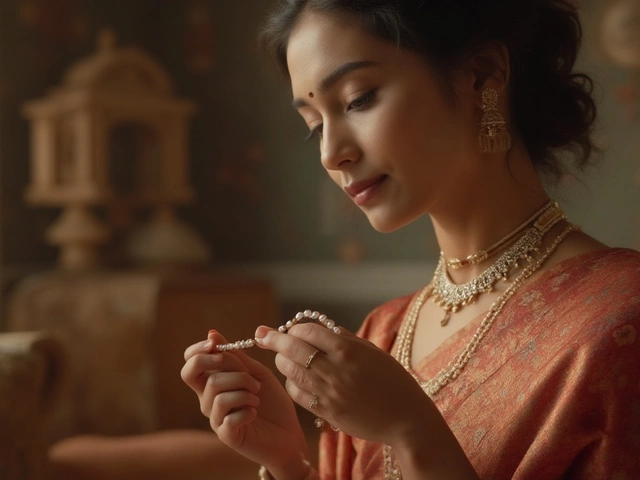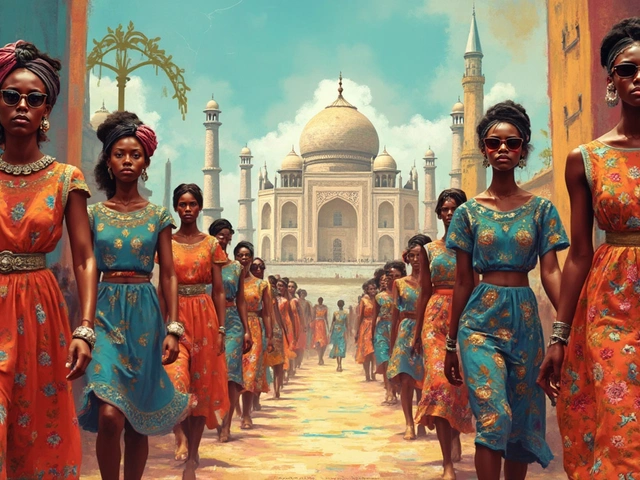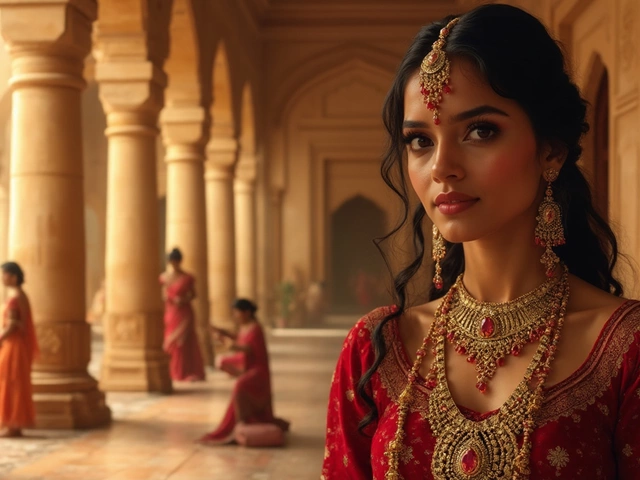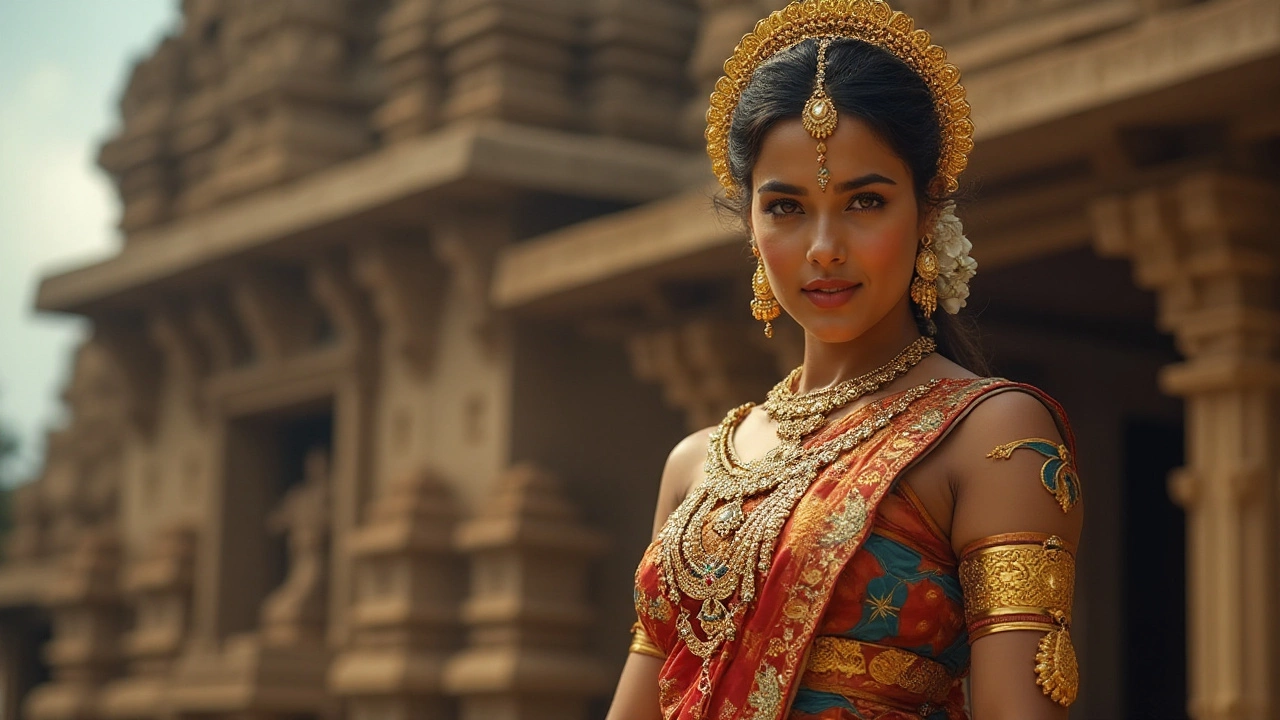
Temple jewelry holds a revered place in the tapestry of India's rich cultural heritage. Its origins date back to the royal courts and sacred spaces of the Chola dynasty in Southern India, where master artisans crafted exquisite pieces to honor the divine. The intricate designs, predominantly made in gold and embellished with rubies, sapphires, and other precious stones, were first intended to decorate idols and later found their place adorning the temple dancers and royal figures.
Today, temple jewelry is not just a relic of the past but a living tradition that continues to captivate those who appreciate its intricate craftsmanship and timeless beauty. From its beginnings, infused with spiritual intent and regality, it has become a beloved symbol of cultural pride and artistry. Whether worn at weddings, cultural events, or imbued into modern fashion, each piece tells a story of devotion, artistry, and heritage that transcends generations.
- Origins and History
- Design Elements and Materials
- Cultural Significance
- Modern Adaptations and Usage
Origins and History
The allure of temple jewellery can be traced back to the grandeur of the ancient Indian kingdoms, particularly during the Chola dynasty's reign, which flourished around the 9th to 13th centuries. These rulers are well remembered for their patronage of the arts and architecture, having left a profound legacy that echoes even today through monumental temples and fine artworks. The temples served as vital cultural and religious hubs, and within their hallowed sanctuaries, these exquisite adornments were first created to venerate the deities. Crafted with an impeccable eye for detail, these pieces symbolized not only religious devotion but also the immense wealth and prosperity of the kingdom they were birthed from.
Legend speaks of how temple jewelry was initially designed exclusively for the deities residing in these sacred spaces. Intricate ornaments were made with devotion, seeking to bestow the gods and goddesses with grandeur fitting their divine status. Artisans worked with unwavering dedication, transforming gold and precious stones into divine manifestations. As the years went by, some of these beautifully crafted pieces transitioned from being solely decorations for deities to gracing the dancers of Devadasi traditions. These dancers, considered brides of the deities, wore the jewelry during temple festivals, symbolizing their sacred duty and connection to the divine.
The Chola period is often heralded as a golden age for art and culture, as scholar Devangana Desai notes, "The temples of the time were not just places of worship but living museums of architecture and art, and temple jewelry was one of the most refined expressions of this cultural vitality."
As temple traditions evolved, so did the design and application of this kind of jewelry. Moving from being sacred accessories to becoming symbols of status and fashion among royal families and the affluent, these pieces started appearing in royal courts as opulent displays of power and prestige. Nobility began wearing them during auspicious occasions, where their ornate designs complemented the richness of their garments. Their adoption by the royal and noble classes turned these gems into a distinct artistic expression unique to Southern India, influencing jewelry designs across the subcontinent. Temple jewellery effortlessly retained its relevance, and even today, it continues to hold an esteemed place, a seamless blend of divine legacy and artistic ingenuity, cherished by admirers across the globe. The evolution of this jewelry not only tells us about artistic advancements but also offers insights into the socio-cultural dynamics of historical India.
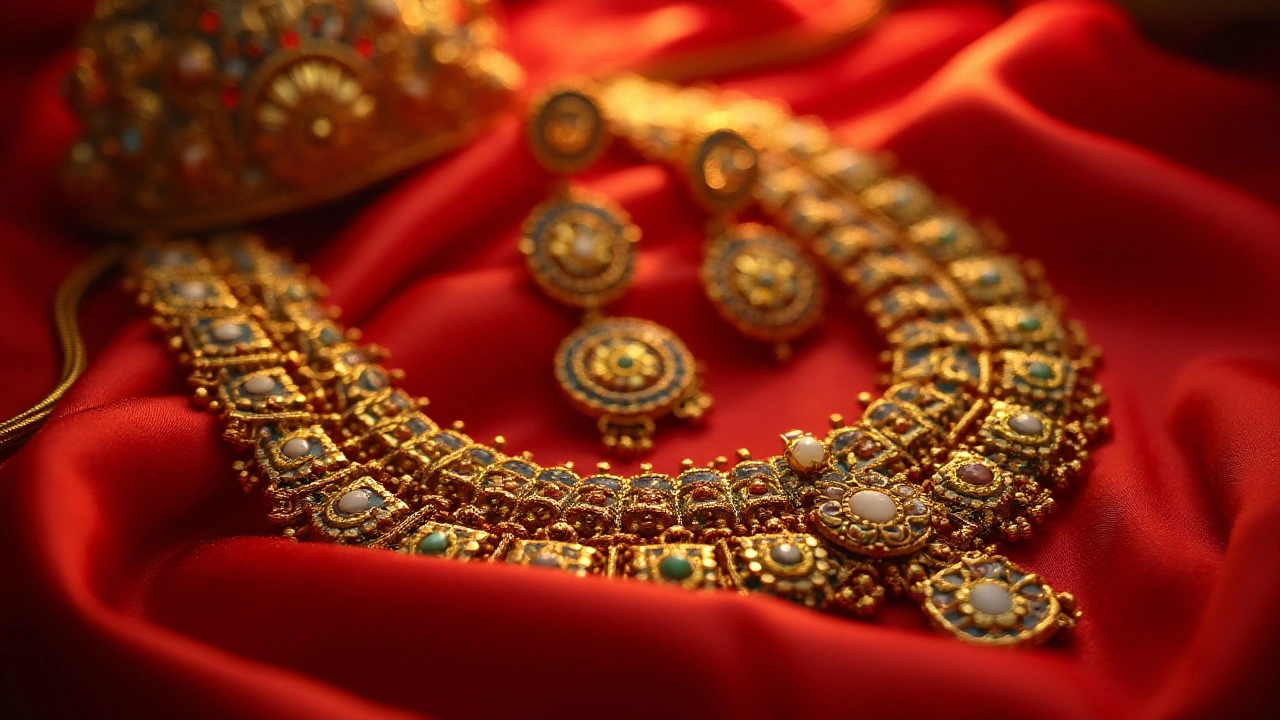
Design Elements and Materials
The art of crafting temple jewellery is a celebrated tradition that has been handed down through generations, each piece imbued with history and symbolism. These creations are not mere ornaments but rather intricate embodiments of the cultural and spiritual values of Southern India. Gold, known as a purifying and auspicious metal, forms the backbone of these timeless treasures. Artisans use 22-carat or higher to craft each piece, ensuring the jewelry retains its luster and opulence over time. Often embellished with an array of precious and semi-precious stones, such as rubies, emeralds, and pearls, temple jewelry reflects the vibrant ethos of the Indian subcontinent.
The motifs prevalent in temple jewelry designs draw heavy inspiration from mythology and nature. Deities and motifs from Hindu scripture such as Lord Ganesha and Goddess Lakshmi are common, providing a divine connection and blessing to the wearer. Floral patterns and intricate carvings mirror nature’s inherent beauty and grace. The granulation and repoussé techniques used often leave onlookers in awe, each pattern appearing as if it flows seamlessly from one to another.
A representation of such artistry is displayed in the traditional style known as ‘addigai,’ recognized for its circular design, often worn by classical dancers. The ‘kasumalai’ stands as a hallmark temple necklace, with coin-like pendants featuring embossed deities. The iconic temple lamps decorating earrings or amid necklaces add not just elegance but also symbolism of enlightenment and knowledge.
As noted by acclaimed art historian Dr. Raghav Prasad, "Temple jewellery is a spiritual cascade of artistry and devotion, reflecting the essence of Indian heritage in its delicate yet enduring forms."
Artisans painstakingly craft each piece by hand, a labor of love that can take weeks, sometimes months, to complete. The techniques they employ have been preserved for centuries, making use of tools that have changed little over time. Modern advancements have, however, introduced some new elements, like the setting of cubic zirconia, offering an alternative to costly stones. While the essence remains unchanged, these adaptations ensure temple jewelry can cater to a broader audience with varying preferences and budgets. By balancing tradition with innovation, temple jewelry continues to flourish, symbolizing a blend of antiquity and modernity that resonates in today's world.
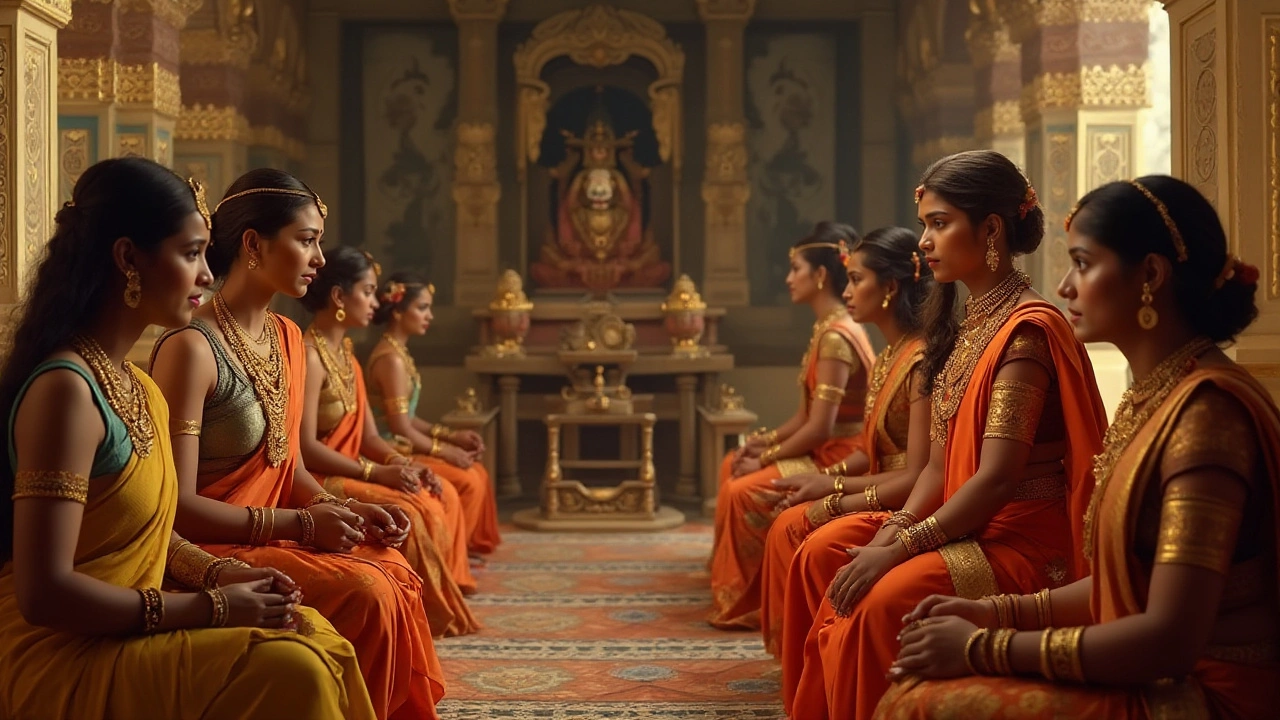
Cultural Significance
The significance of temple jewellery in Indian culture goes beyond mere adornment; it's a profound expression of spirituality and identity that weaves through the fabric of India's traditions. Originating in the spiritual heart of Southern India, these ornate accessories were initially created with religious intent. They graced the statues of deities in Hindu temples, serving not only as offerings to the divine but as visual manifestations of reverence. This deep-rooted association with divinity provided the jewellery an aura of sanctity and prestige.
During the reign of the Chola dynasty, temple jewellery evolved, becoming central to the performance arts. Temple dancers, or 'devadasis', were adorned with these exquisite pieces as they performed sacred rituals and dances during religious ceremonies. Each ornament they wore held symbolic meaning, believed to harness spiritual protection and blessings. Even today, bridal jewelry in South India is heavily inspired by this traditional style, with many brides choosing to emulate the opulence of temple dancers to intertwine spirituality with marital bliss. A quote by art historian Kamala Devi states,
"Temple jewellery is akin to carrying a piece of spirituality; it embodies the elegance of cultural lineage and divine artistry."Such sentiments encapsulate why temple jewellery remains so culturally pertinent.
An interesting facet is how temple jewellery became a symbol of royal power and wealth. Royalty would commission bespoke pieces to convey their divine right to rule and their affiliation with the gods. The materials used, primarily gold and precious stones, not only spoke of the opulence but reflected the wearer’s status. Today, these pieces are often passed down generations, serving as family heirlooms that bind history and lineage with personal identity. In modern times, the craftsmanship of temple jewellery has seen a revival, with artisans embracing both traditional methods and contemporary designs. This renaissance taps into a global appreciation of cultural heritage, making temple jewellery an ambassador of Indian artistry on the world stage.
Moreover, temple jewellery has found a place in the modern fashion narrative. Designers incorporate these traditional motifs with a twist of modernity, creating a fusion that appeals to younger generations. It's not uncommon to see elements of temple jewellery in high fashion runways or cultural festivals around the globe, a testament to its lasting allure and adaptability. The enduring appeal of these pieces lies in their ability to span across timelines, resonating with people as both artistic masterpieces and cultural beacons. A recent survey in India showed that 68% of women prioritize traditional aesthetics in their jewelry, highlighting the sustained reverence for such cultural elements.
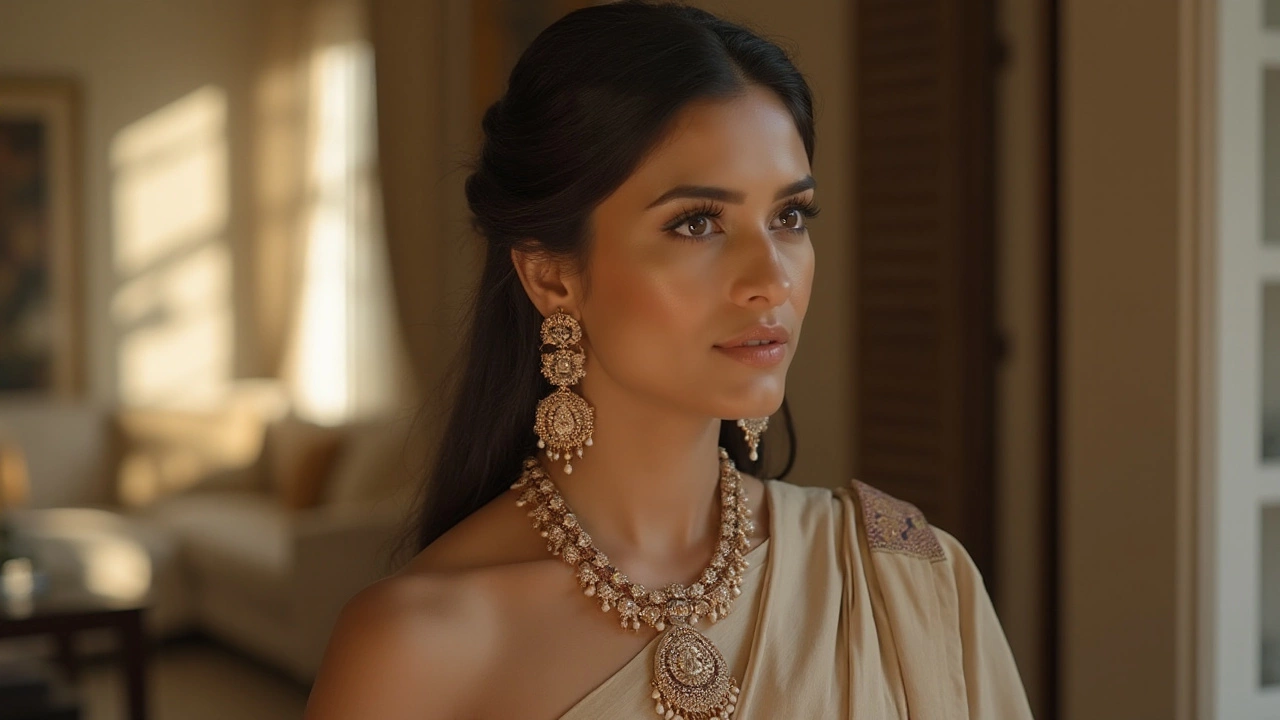
Modern Adaptations and Usage
The timeless elegance of temple jewellery has gracefully transcended its traditional roots to find a cherished place in contemporary fashion. In today's vibrant style landscape, these intricate pieces have not only retained their cultural essence but have also evolved to complement modern sensibilities. As fashion designers and jewelry enthusiasts alike delve into India's rich heritage, temple jewelry has emerged as a versatile adornment that can effortlessly transition from traditional ensembles to chic western outfits.
Modern adaptations often see these pieces being crafted in more lightweight forms, making them practical for everyday wear, yet without losing their iconic aesthetic. The fusion of traditional artistry with modern techniques has resulted in designs that appeal to a wider audience, including younger generations who are keen to embrace cultural heritage with a contemporary twist. These adaptations maintain the classic motifs—such as peacocks, elephants, and deities—while incorporating materials like silver and even alternative metals to offer an array of options for diverse preferences and occasions.
The bridal market remains a significant arena where these jewels dazzle. The blend of gold and colored stones ensures that each bride is adorned in grandeur, offering her a regal aura that harks back to ancient queens. However, the allure of temple jewelry is not confined just to wedding ceremonies. With celebrities and influencers flaunting these elegant pieces on social media platforms and at various events, temple jewelry has sparked a resurgence, marking its presence as a statement accessory that pairs strikingly with both casual and formal attire.
"Temple jewelry serves as a bridge between our illustrious past and the dynamic present. It's a celebration of our art and heritage wrapped in modern styling," remarked Anuj V. Kumar, a renowned jewelry designer, in a recent interview with Vogue India.
The appeal for these pieces is evident among collectors and connoisseurs, who value not only the craftsmanship but the cultural narratives these exquisite accessories convey. It's not uncommon to find temple jewelry being showcased in international fashion week runways, where its intricate designs are celebrated as masterpieces of traditional artistry. Such events highlight how Indian jewelry traditions have found admirers worldwide, emphasizing their global appeal and adaptability.
Adding to its charm, the use of temple jewellery in movies and television has kept the tradition alive, serving as muse and inspiration for costume designers in epic historical dramas and period films. The powerful visual storytelling through these jewels often helps in authentically portraying characters from Indian history, thereby bringing a slice of the country's rich tradition to global audiences. The dynamics of temple jewelry in contemporary contexts undoubtedly showcase its remarkable ability to adapt while retaining the essence of an age-old craft.
